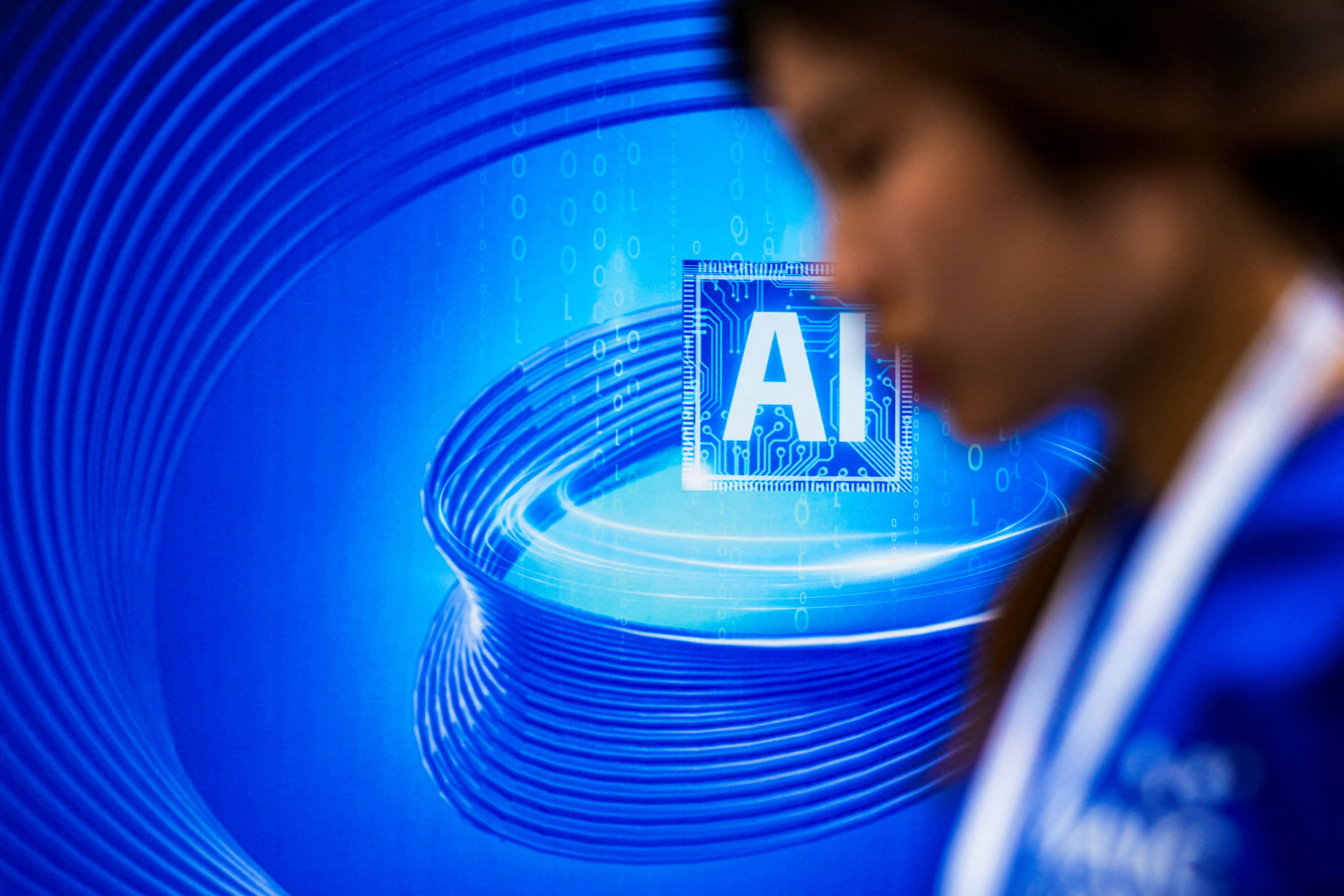3 ways COVID-19 is transforming advanced analytics and AI

Image: Photo by Markus Spiske on Unsplash
- The crisis required solutions in days, not weeks or months, requiring new approaches to AI models and technologies.
- Agile methods and dynamic, resilient models can ensure new solutions to tackle future crises and challenges.
While the impact of AI on COVID-19 has been widely reported in the press, the impact of COVID-19 on AI has not received much attention. Three key impact areas have helped shape the use of AI in the past five months and will continue to transform advanced analytics and AI in the months and years to come.
What is the World Economic Forum doing about the coronavirus outbreak?
The speed of decision-making leads to agile data science
The spread of the pandemic — first in China and South Korea and then in Europe and the United States — was swift and caught most governments, companies and citizens off-guard. This global health crisis developed into an economic crisis and a supply chain crisis within weeks (demand for toilet paper and paper towels alone rose by 600-750% during the week of March 8 in the US). Less than 100,000 global confirmed cases in early March ballooned to more than 13 million by July with more than 580,000 deaths.
With business leaders needing to act quickly, the crisis provided a chance for advanced analytics and AI-based techniques to augment decision-making. While machine learning models were a natural aid, development time for machine learning models or advanced analytical models typically clock in at four to eight weeks — and that’s after there is a clear understanding of the scope of the use case, as well as the necessary data to train, validate and test the models. If you add use-case evaluation before model development, and model deployment after the model has been trained, you are looking at three to four months from initial conception to production deployment.
"With business leaders needing to act quickly, the crisis provided a chance for advanced analytics and AI-based techniques to augment decision-making."
”For solutions in days - not weeks or months - minimum viable AI models (MVAIM) had to be developed in much shorter time frames. Using agile data science methodologies, PwC was able to compress these times significantly, building a SEIRD (Susceptible-Exposed-Infected-Recovered-Death) model of COVID-19 progression for all 50 US states in one week. We then tested, validated and deployed it in another week. Once this initial model was deployed, we extended it to all counties in the US and made the model more sophisticated.
Uncertainty about the future leads to multi-agent simulations
Uncertainty touched every aspect of life under COVID-19 – from health, to behavior to economic impact - and expedited the increased adoption of advanced analytics and AI techniques. Uncertainty feeds emotional reactions such as fear, anger and frustration and such emotionally-driven behavior took precedence over rational decisions and actions, especially in the early days of the pandemic.
Uncertainty along the different dimensions made scenario planning the dominant framework for evaluating plans and decisions. Scenario analysis became the predominant paradigm for evaluating disease progression, economic downturn and recovery (e.g., V-, U-, L, W-shaped economic recoveries), as well as for management decision-making on site openings, contingency planning, demand sensing, supply chain disruptions and workforce planning. While qualitative scenario analysis is quite common in the business world, using AI-based simulations to quantitatively understand the causal linkages of different drivers and develop contingent plans of action was brought to the fore by the pandemic.
Modeling human behavior (rational and emotional) became an important aspect of the scenario analysis. For example, compliance to the stay-at-home orders was one of the primary behavioral drivers to help contain the spread of the disease as well as economic activity. As a result, agent-based modeling and simulation was one of the primary advanced analytics and AI techniques used to perform scenario analysis. Daily mobility data on how many miles were driven within each zip code in the country became a proxy for the effectiveness of the stay-at-home orders. The same data was used to model the mobility behavior of people in different parts of US as the pandemic progressed. Agent-based models were one of the best techniques to capture the time- and location-dependent variations in human behavior during the pandemic.
System dynamic modeling, another well-known modeling technique, was critical in integrating multiple decision-making domains (e.g., COVID-19 disease progression, government interventions, people behavior, demand sensing, supply disruptions etc.). Agent-based simulation has traditionally been used by the Centers for Disease Control and Prevention (CDC) and other health authorities to model disease progression and health behaviors. Both methods have been used successfully in a number of uncertain scenarios to help make strategic and operational management decisions. Some recent examples include the following:
- A SEIRD (Susceptible-Exposed-Infected-Recovered-Death) disease progression model using synthetic behavioral data for the US to estimate the COVID-19 risk propensity of localized population groups. This model, built by PwC, proved invaluable in the early days of the pandemic to estimate hospitalizations, ICU bed demand and ventilators. The initial MVAIM (minimum viable AI model) was then extended to take into account the mobility of the population in different zip codes. As some states in the US went past peak hospitalization points, we built agent-based demand simulation models for hospitals to help determine the demand for non-COVID-19 procedures. The demand models incorporated the potential emotional behavior of patients, including fear and anxiety, and the urgency/severity of the existing health conditions. The primary factor driving the need for such sophisticated behavior modeling to estimate demand was the uncertainty around human behavior during the pandemic.
- An integrated demand sensing, supply chain disruption and workforce planning simulation model. Our team brought multiple silos of management decision-making into a single-system dynamic model — a critical requirement given the speed and uncertainty of the evolving pandemic. This initial MVAIM was then extended to incorporate multiple macro-economic recovery scenarios like the V, U, L, and W economic recovery scenarios. Under normal, non-pandemic scenarios, demand, production (using work force and machinery), and supply chain are treated as independent silos for localized decision-making. However, during the pandemic all these three had to be analyzed together and every day to ensure that companies were holistically making decisions around demand, supply, and workforce which made the system dynamic models ideal for such analysis.
Lack of historical data leads to upsurge of model-based AI
Given the rarity of the pandemic event there was very little historical data at a global level on the disease. As a result, there was little data to power data-rich, model-free approaches to AI, like deep learning that have become popular in recent years.
By necessity, model-based AI (which leverages the data available) saw a resurgence. As the pandemic progressed, and more data was available, data-rich and model-free approaches could be combined, leading to a few key hybrid solutions:
- Epidemiological models encapsulated the knowledge and experience of disease progression from previous outbreaks. As more data about the disease emerged on a daily basis, machine learning approaches were combined with the epidemiological models. The historical part of the epidemiological model was calibrated to the actual data, and the resulting models were then used to help project future scenarios. The daily update of disease data at a granular level (e.g., state and county level in the US) provided a mechanism to compare the simulated and actual outcomes and improve these models.
- In developing a hybrid workforce model for a client considering opening a manufacturing site with little data available on their workers’ absenteeism, we were able to build a model to help run multiple scenarios using other data sources (e.g., absenteeism trends within the sector) and data from other models (e.g., infection and fatality rates in the county where the manufacturing site was located, using the SEIRD model).
In many ways, the pandemic has highlighted the inadequacies of our systems, processes, governance and behaviors. On the other hand, it has also provided an opportunity for data scientists and AI scientists to put their advanced techniques and tools to use by helping business leaders make decisions in a challenging environment that’s dominated by speed, uncertainty and lack of data.
In summary, as organizations manage through this pandemic and transform themselves post-pandemic three key learnings are worth keeping in mind. First, focus on agile data science methods that address the speed, urgency, and uncertainty of decision making. Second, build and manage your business using dynamic and resilient models (e.g., scenario-based simulations using system dynamic and agent-based models) that capture the inter-relationships of multiple domains (e.g., demand, production, supply, finance) and human behavior. Third, combine model-rich and data-rich approaches to obtain the best of both worlds while building AI systems. These approaches can ensure you can seek solutions quickly while maximizing the technologies and processes already in place.
Don't miss any update on this topic
Create a free account and access your personalized content collection with our latest publications and analyses.
License and Republishing
World Economic Forum articles may be republished in accordance with the Creative Commons Attribution-NonCommercial-NoDerivatives 4.0 International Public License, and in accordance with our Terms of Use.
The views expressed in this article are those of the author alone and not the World Economic Forum.
Stay up to date:
Data Science
Related topics:
Forum Stories newsletter
Bringing you weekly curated insights and analysis on the global issues that matter.
More on Emerging TechnologiesSee all
Dr Gideon Lapidoth and Madeleine North
November 17, 2025






